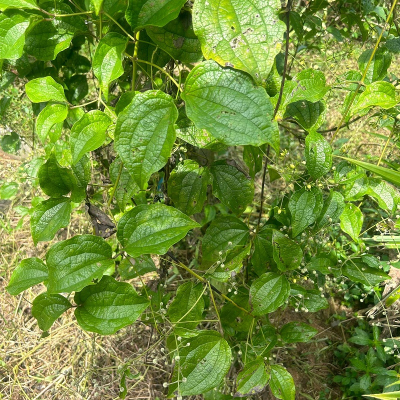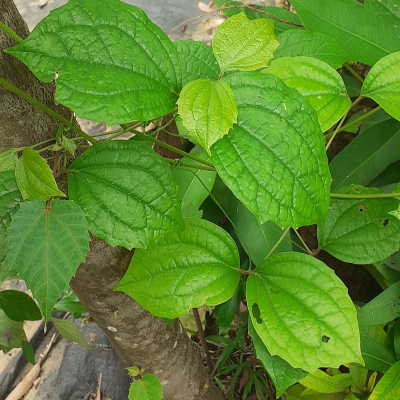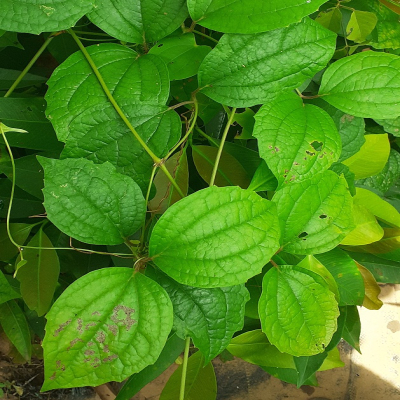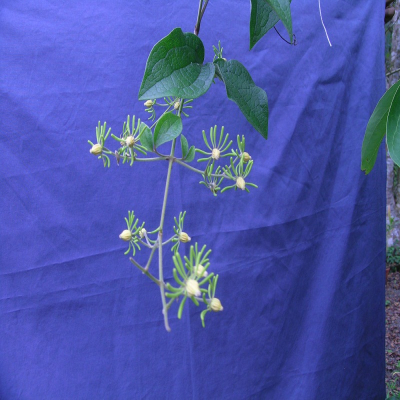Distribution and habitat: Found throughout India.
Botany: A scandent or climbing shrub with tuberous roots, wiry stem and strong tendrils.
- Leaves: 3-foliate, opposite, terminal leaflet modified in to a 3-branched tendril, leaflets ovate-lanceolate, serrate or crenate, prominently nerved.
- Flowers: Yellow, fragrant, in axillary or terminal panicles, sepals downy, petals linear–clavate, elongate.
- Fruits: Aggregate of achenes, ending in twisted feathery tails.
Chemical constituents: It contains alkaloids, flavanoids, tannins and glycosides.
Properties: The plant is astringent, bitter, sweet, anthelmintic, depurative, anodyne, anti-inflammatory and vulnerary.
Uses: It is useful in helminthiasis, dermatopathy, leprosy, rheumatalgia, odontalgia, cephalalgia, colic, inflammations, wounds and ulcers.
Agrotechnology
Propagation: Tip or middle portion of the stem having 15-20 cm length and 3-4 buds
Planting: 60 day old rooted cuttings are planted at a spacing of 1 m x 1m.






